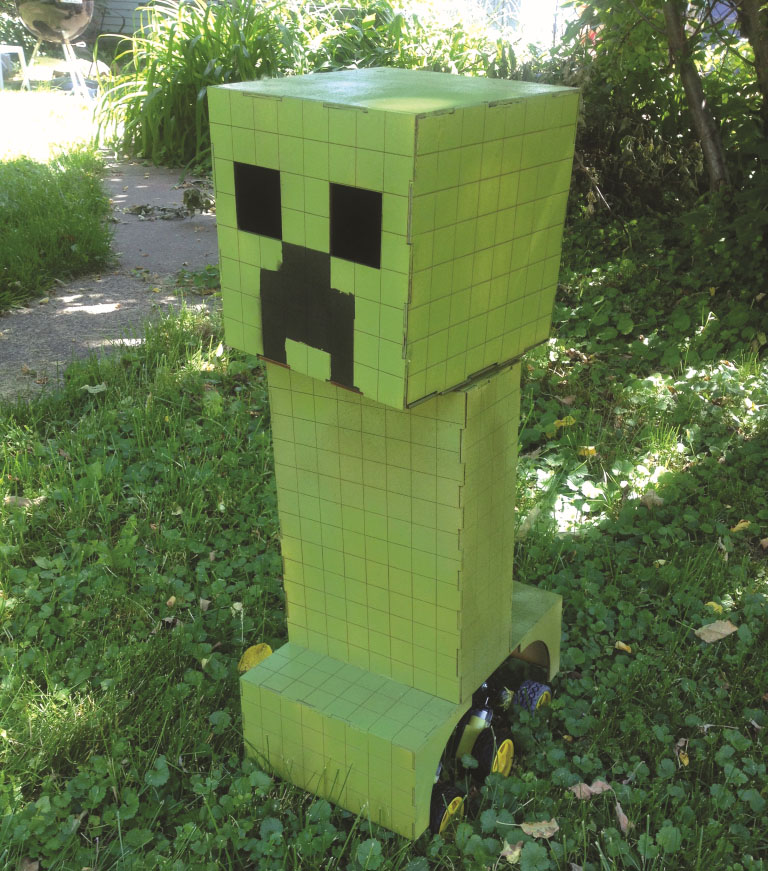When I wrote my new book Make: Minecraft for Makers, you know I had to include a monster Creeper project. Here’s how you can build a motorized Creeper, with a metal skeleton and wooden skin. Aside from the fact that this thing most certainly doesn’t blow up, you’ll love it, and you’ll learn a lot about robotics and Arduino along the way. Let’s get to it!
The Creeper consists of a robot chassis kit with add-on parts creating the mob’s distinctive armless body, with a servo motor to move the head around. Begin by taking a look at the Creeper in-game. Just be sure to stick to Creative mode or you may find yourself getting blown up!
The Creeper has a cubical head 8 pixels on a side, a 4×8×12 body, and four 4×8×4 legs. It’s actually a pretty elegant design, which makes it a breeze for building a physical re-creation.
DESIGN IT
The Robot Creeper seems super challenging at first. The thing has to look like a Creeper, ideally proportionate with the game element. At the same time, it also has to function as a robot. In other words, regardless of its outer appearance, the Creeper has to be able to fit all the necessary robotic components, particularly the chassis kit we’re using for the base.
I began with the Actobotics Bogie Runt Rover, a kit available for around $70 that comes with a chassis, six motors, and six wheels. The assembled rover’s chassis measures 6″×9″, though the wheels project a little, and it rides fairly high: 6″ off the ground. With those measurements I was able to decide the size of the footprint: 12″×8″ — conveniently, one inch per pixel.
Applying the one-inch scale across the whole robot makes for a 12″-high, 8″-wide, and 4″-deep body, an 8″ cubical head, as well as four legs 6″×4″×4″. However, for the legs I decided to merge the front pair and back pair into 8″-wide blocks — the thing is going to roll, not walk. The image above shows my final design. I created vector files to be used on a laser cutter, but you could simply cut the pieces from wood, or get creative with other materials — recycle those Amazon boxes and use some packing tape to knock out a cheap, simplified version.
Next, we need to design the robot’s electronics. What will be its functionality? How will it be controlled? The Minecraft Creeper is known for blowing up, and clearly that was out. It also turns its head, and we can do that by putting a servo motor inside the body to turn our robot’s head. The Creeper also has eyes that turn red when it’s about to explode. That’s easy! We’ll put NeoPixel Jewels in the head.
Under the hood I stuck with the classic Arduino Uno, with a motor control shield sitting on top. This add-on board helps the Arduino manage the high voltages needed to run motors, and it simplifies controlling them.
Speaking of control, I’m making a basic controllerthat connects to the robot via a trio of wires.





